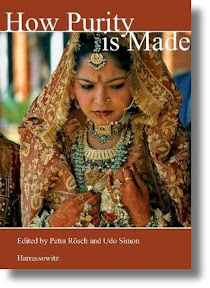How Purity is Made
Rösch, Petra [u.a.] [Hrsg.]:
How Purity is Made / ed. by Petra Rösch and Udo Simon. - Wiesbaden : Harrassowitz, 2012. - 470 S. : Ill.
ISBN 978-3-447-06542-9
EUR 58,00
DDC: 204.46
Beschreibung
Concepts of purity and impurity are used in a great variety of contexts for both concrete and immaterial phenomena and are firmly embedded in many, often antagonistic worldviews. Can a common core be discerned in the various ways purity is conceived, extending over and beyond cultural differences? Both change and continuity in purity and its (corresponding) discourses afford insight into the dynamics of social transformative processes. They form the perspective to apply purity concepts and submit them to personal interpretation. Though usually combined with, or even tantamount to, ritual action these concepts seem to lend themselves particularly to being de-ritualized and then re-ritualized. The 23 contributions of How Purity is Made discuss purity and impurity by looking at the dimensions of action, conception, representation, experience and internalisation. They cover geographical regions from Europe over Asia to Northern America and span chronologically from prehistory to the present time. [Verlagsinformation]
Muslims in Germany. 309
Herausgeber
PETRA H. RÖSCH, Museum für Ostasiatische Kunst, Köln
UDO SIMON, Seminar für Sprachen und Kulturen des Vorderen Orients, Islamwissenschaft bzw. Iranistik, Universität Heidelberg. Projektleiter des Teilprojekts C9, Cluster "Asia and Europe in a Global Context", des SFB 619 "Ritualdynamik". Profilseite.
Quellen: Harrassowitz; Deutsche Nationalbibliothek; Buchhandel.de; Amazon (DE)
Rösch/Simon: How Purity is Made, 2012
Ähnlich
- Hindu, Buddhist and Daoist Meditation
- Bellezza: Death and Beyond in Ancient Tibet
- Bön, Geister aus Butter
- Derges: Ritual and Recovery in Post-Conflict Sri Lanka
- Les ancêtres
- Dynamics of the Ritual Gift System
- Emotions in Rituals and Performances
- The Awakened Ones
- Negotiating Rites
- Collins: The Head Beneath the Altar

